Photos: Historic Clifton's Cafeteria through the Decades
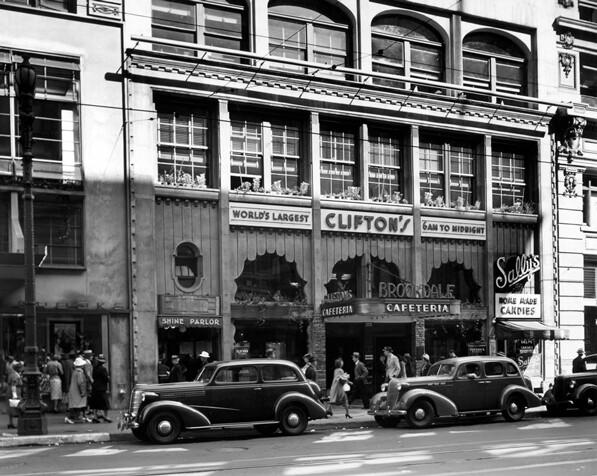
When a piece of Los Angeles history disappears, it's often lost forever - preserved only in our collective memory and in the region's photographic archives. But in some rare cases, that history is only hidden, preserved by accident for later generations to rediscover.
Today, the façade of downtown's historic Clifton's Brookdale Cafeteria saw the light of day for the first time since the early 1960s, as explained at KCET Food. For decades, the building's art deco façade stood quietly behind a wall of aluminum grates - removed last night and replaced with a temporary tarp, which Clifton's owner Andrew Meieran shucked from the building this morning at a special ceremony hosted by the Los Angeles Conservancy and city council member Jose Huizar's Bringing Back Broadway initiative.

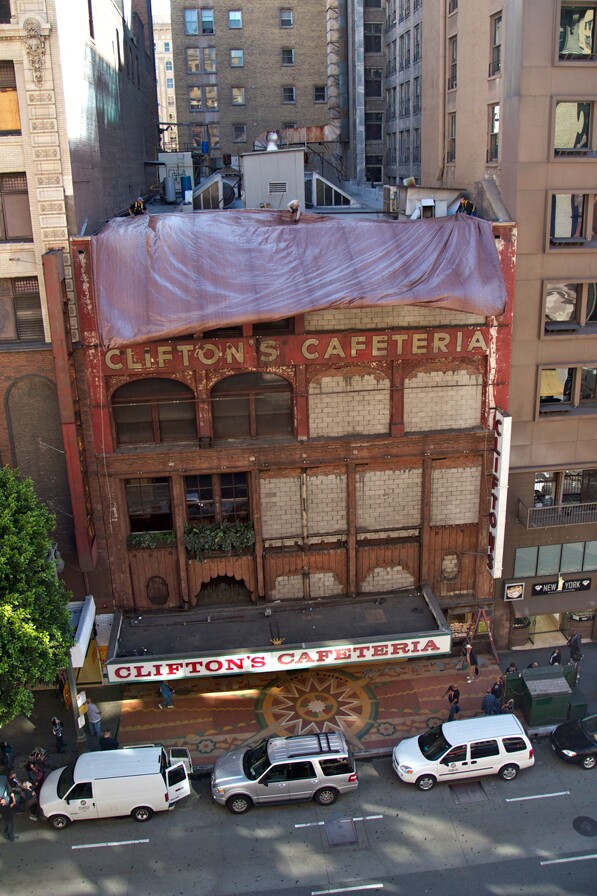
The aluminum grates were an artifact of downtown L.A.'s mid-century decline. With an increasing number of shoppers migrating from downtown to suburban shopping malls or the commercial corridor of Wilshire Boulevard, Clifton's and other downtown businesses tried to stanch the flow of business by giving their buildings a more modern look. Clifton's metallic façade went up in 1963.
"They ended up keeping the original façade intact by accident and not by design," said KCET.org contributor Ed Fuentes, who was at this morning's unveiling. "Everything that's old is new again."
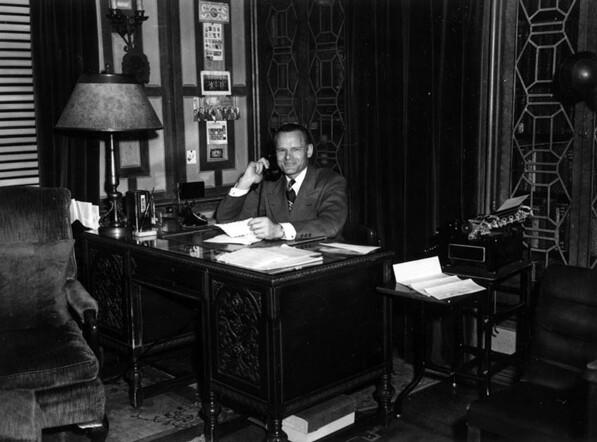
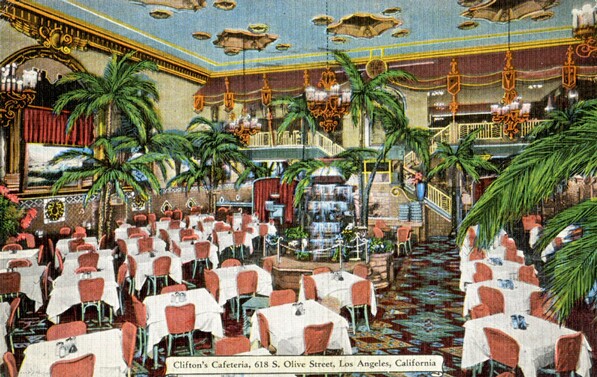

The Broadway cafeteria - closed temporarily since September as it undergoes renovations - is the last survivor among a chain of ten Clifton's restaurants.
Clifford Clinton opened the first Clifton's (a portmanteau of its founder's first and last names) in 1931 at 618 S. Olive Street. Amid a crowded field of downtown cafeterias, Clinton distinguished his with lavish decorations and a flexible pricing policy--an illuminated sign once suggested, "Pay What You Wish."
Clinton's original Olive Street location acquired tropical décor in the late 1930s and became known as Clifton's Pacific Seas. It was long a popular eatery among Angelenos and tourists alike before it closed in June 1960. It even earned a reference in Jack Kerouac's classic novel On the Road.
In 1935, Clinton purchased the cafeteria on Broadway that would become today's lone surviving Clifton's. He transformed the location, which first opened in 1913 as a Boos Brothers Cafeteria, into a sylvan wonderland inspired by the redwood forests of the Santa Cruz Mountains. Like the Pacific Seas cafeteria, Clifton's Brookdale became a Los Angeles institution, attracting diners with its food, prices and kitschy atmosphere.
Clinton, whose papers are archived at the Department of Special Collections at UCLA's Young Research Library, turned over control of the chain to his children in 1949. The Clinton family continued to run the business until 2010, when Meieran took over. (The family still owns the Broadway building itself.)
Now, as renovations continue and restoration work on the original façade begins, explore the Clifton's cafeterias of L.A.'s past through historical images from some of the region's photographic archives.



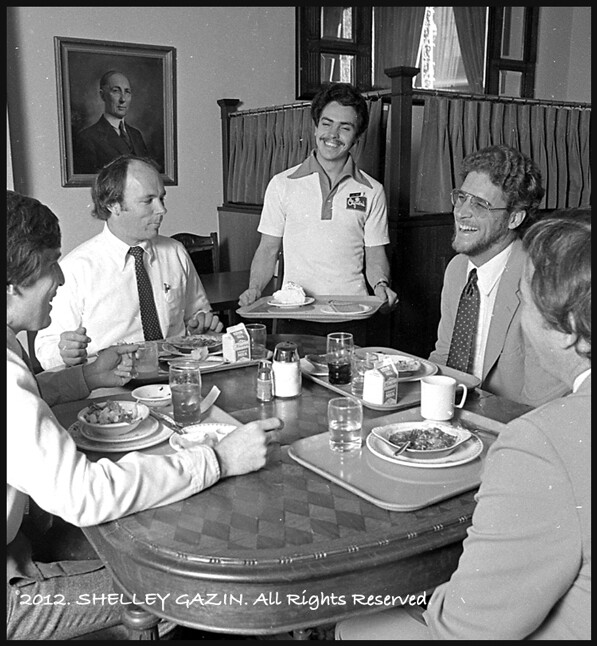


Update, Feb. 8, 5:30 p.m.: The captions for the three photographs taken in 1981 have been updated to reflect the fact that they were from Clifton's Silver Spoon in downtown Los Angeles, today the site of Mas Malo Restaurant.
Contributors to this post include the David Boule Collection, Esotouric, the Gazin Archive, the Los Angeles Public Library, and the USC Libraries.

Many of the archives who contributed the above images are members of L.A. as Subject, an association of more than 230 libraries, museums, official archives, personal collections, and other institutions. Hosted by the USC Libraries, L.A. as Subject is dedicated to preserving and telling the sometimes-hidden stories and histories of the Los Angeles region. Our posts here provide a view into the archives of individuals and cultural institutions whose collections inform the great narrative—in all its complex facets—of Southern California.


